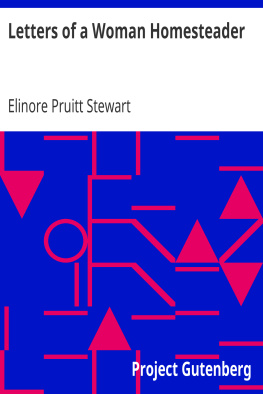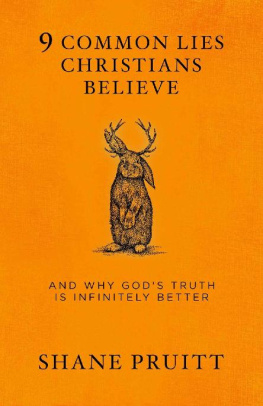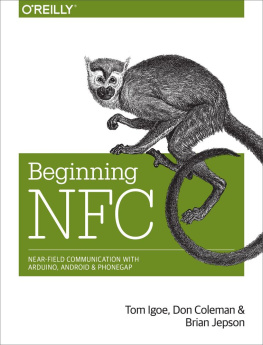Bob Hansman - Pruitt-Igoe
Here you can read online Bob Hansman - Pruitt-Igoe full text of the book (entire story) in english for free. Download pdf and epub, get meaning, cover and reviews about this ebook. year: 2017, publisher: Arcadia Publishing Inc., genre: Non-fiction. Description of the work, (preface) as well as reviews are available. Best literature library LitArk.com created for fans of good reading and offers a wide selection of genres:
Romance novel
Science fiction
Adventure
Detective
Science
History
Home and family
Prose
Art
Politics
Computer
Non-fiction
Religion
Business
Children
Humor
Choose a favorite category and find really read worthwhile books. Enjoy immersion in the world of imagination, feel the emotions of the characters or learn something new for yourself, make an fascinating discovery.

- Book:Pruitt-Igoe
- Author:
- Publisher:Arcadia Publishing Inc.
- Genre:
- Year:2017
- Rating:4 / 5
- Favourites:Add to favourites
- Your mark:
- 80
- 1
- 2
- 3
- 4
- 5
Pruitt-Igoe: summary, description and annotation
We offer to read an annotation, description, summary or preface (depends on what the author of the book "Pruitt-Igoe" wrote himself). If you haven't found the necessary information about the book — write in the comments, we will try to find it.
Pruitt-Igoe — read online for free the complete book (whole text) full work
Below is the text of the book, divided by pages. System saving the place of the last page read, allows you to conveniently read the book "Pruitt-Igoe" online for free, without having to search again every time where you left off. Put a bookmark, and you can go to the page where you finished reading at any time.
Font size:
Interval:
Bookmark:

IMAGES
of America
PRUITT-IGOE

Pruitt-Igoe was carved out of the DeSoto-Carr neighborhood. This photograph was taken around the time Pruitt was opening in 1954. The ubiquitous pushcarts would show up again years later in the last days of Pruitt-Igoe itself. (SHS.)
ON THE COVER: Children are seen here playing in one of the neighborhood playgrounds that used to be in the Pruitt-Igoe complex. (MHS.)
IMAGES
of America
PRUITT-IGOE
Bob Hansman

Copyright 2017 by Bob Hansman
ISBN 978-1-4671-2582-6
Ebook ISBN 9781439661499
Published by Arcadia Publishing
Charleston, South Carolina
Library of Congress Control Number: 2016962530
For all general information, please contact Arcadia Publishing:
Telephone 843-853-2070
Fax 843-853-0044
E-mail
For customer service and orders:
Toll-Free 1-888-313-2665
Visit us on the Internet at www.arcadiapublishing.com
Dedicated to and in memory of
Rev. Joel Kelly Davis Sr.
(April 5, 1915May 17, 2016)
Grace Baptist Church, The Pearl of Cass Avenue
CONTENTS
ACKNOWLEDGMENTS
Thank you to Tim Pemberton; Mike Meiners, St. Louis Post-Dispatch; Rev. Jonathan Davis; Felicia Davis; Bernadette Davis Jones; Michael Allen; Rena Schergen, archivist, Archdiocese of St. Louis; Lois Conley, Griot Museum of Black History; Sister Charlene Moore; Charles E. Brown, St. Louis Mercantile Library; Tom Thompson; Penelope Penny Smith; Billie Johnson; Elise Novak; Nancy McIlvaney, photograph archivist, The State Historical Society of Missouri; Dick Rosenberger; Percy Green; Miguel and Carla Alexander, Tillies Corner Historical Project; Brian Woodman; Robert Green, Frederick A. Douglass Museum of African-American Vernacular Images; Miranda Rectenwald, curator of Local History, Archives & Special Collections, Washington University Libraries; Sonya Rooney, University Archives, Special Collections, Washington University Libraries; Calvin Riley, George B. Vashon African Research Museum; the St. Louis Argus; Frankie Muse Freeman; Amanda Claunch, MHS Photo Archives, Missouri Historical Society, St. Louis; the St. Louis Evening Whirl; Renita Waters; Ida Mobley; Gloria Ross; Louis Kruger, St. Louis Public Schools; Jack and Odester Saunders; Andy Raimist; Brother Earl; Lillie Glenn, St. Louis Housing Authority; Chris King, St. Louis American; Chris Krehmeyer, Beyond Housing; Aaron J. and Mary L. Witherspoon; Marilyn Shnider, Baltimore Sun Media Group; William Kiefer Jr.; Jo Ellen Rosenkoetter; Pamela Wise-Martinez; Joyce Jones and Frank Robinson Sr., Mathews-Dickey Boys & Girls Club; Alana Flowers; Bernie Hayes; and Isreal.
The images in this volume appear courtesy of the following sources:
Archdiocese of St. Louis Archives and Records (AR)
Artega Photos, LTD (AP)
Baltimore Sun, all rights reserved (BS)
City of St. Louis, Office of the Mayor: Raymond R. Tucker Records (OM)
Missouri Historical Society, St. Louis [History Museum] (MHS)
St. Louis American (SLA)
St. Louis Mercantile Library at the University of Missouri-St. Louis, Globe Democrat Collection (ML)
St. Louis Post Dispatch (PD)
St. Louis Public Schools Archives (PS)
St. Louis University Archives and Record Management, George Wendel Collection (SLU)
The State Historical Society of Missouri, Photograph Collection (SHS) 1966 Annual Report of the Urban League of St. Louis, Inc. (UL)
The Davis Family (DF)
Elise Novak (EN)
Tom Thompson (TT)
Bob Hansman (BH)
INTRODUCTION
In 1908, the DeSoto-Carr neighborhood just north of downtown St. Louis was getting attention among social reformers. The Housing Conditions in St. Louis: Report by Charlotte Rumbold and the Housing Committee of the Civic League of St. Louis lamented the almost complete decrepitude and appalling lack of sanitation in the neighborhood that lay just to the east of what would become Carr Square Village public housing for blacks in 1942. Only a few years later, and a few blocks farther west, this would also become the site of Pruitt-Igoe.
As the original black population of St. Louis increased during the Great Migration, a stunning array of policiesfrom the 1916 Segregation Ordinance to a proliferation of some 378 neighborhood restrictive covenantsforced the concentration of blacks into a few main neighborhoods, Mill Creek Valley being the first, along the east-west downtown core.
In the late 1930s, St. Louis began building two segregated low-rise public housing projectsClinton-Peabody on the south side for whites and Carr Square Village on the north side for blacks. This period coincided with the New Deal programs (FHA, HOLC, and GI Bill) that, collectively, accelerated the flight of whites from cities.
By the mid-1900s, with the arrival of the highway system and urban renewal, something of a perfect storm began to develop in many older northern cities. In St. Louis, the storm was exacerbated by the 1876 divorce of the city from the surrounding county, land-locking the city and putting the effects of white flight on steroids. And when urban renewal and the highway system intersected with slum clearance, historic African American neighborhoods like Mill Creek Valley became ground zero for the storm.
In February 1951, at a meeting sponsored by the Urban League, Beatrice Wheeler Thomas, a seventh grade black teacher at Cole School, said, I find it an increasingly difficult job to explain [to students] the meaning and ideals of democracy in the face of the contradictory, undemocratic and un-Christian-like practices of segregation.
Mill Creek Valley was declared blighted; eminent domain was invoked. Between 1955 and 1959, Mill Creek Valley would be completely wiped outseveral square miles near the heart of the cityand replaced by Highway 40. What would enter was something of a second phase of public housingwhere people would go as their neighborhoods were being destroyed.
Just to the north of the ill-fated Mill Creek Valley was DeSoto-Carr, already the focus of longstanding concern, and considered by many to be one of the other worst slums in the city. Soon all the pieces would fit together.
Mayor Joseph Darst, who was elected in 1949, had been impressed with New York Citys high-rise housing and preferred it to St. Louiss low-rise buildings. Children given the opportunity of residing under healthful community conditions and rescued from the squalor of slums will have greater physical, spiritual and economic strength to carry on the traditions of democracy, he said.
In 1950, the theme of Progress or Decay beat like a drum in the local paper. As Cochran Gardens, the first high-rise public housing in St. Louis, was being built, beginning in 1952, it was touted as St. Louis Answer to Progress or Decay. A May 9, 1952, Public Housing Week mayors proclamation and brochure announced, St. Louis Chooses Progress. Two weeks later, on May 23, ground was broken for Pruitt.
Clinton-Peabody and Carr Square practiced racial segregation; Cochran Gardens was designated for whites only. And Pruitt and Igoe were being planned as segregated. The Pruitt Homes would be 20 eleven-story buildings for black folks, just over the rise to the north of Mill Creek Valley; the Igoe Apartments would be 13 eleven-story buildings for whites, just north of Pruitt across Dickson Street. (Echoes of the Mason-Dixon Line seem unavoidable.)
Next pageFont size:
Interval:
Bookmark:
Similar books «Pruitt-Igoe»
Look at similar books to Pruitt-Igoe. We have selected literature similar in name and meaning in the hope of providing readers with more options to find new, interesting, not yet read works.
Discussion, reviews of the book Pruitt-Igoe and just readers' own opinions. Leave your comments, write what you think about the work, its meaning or the main characters. Specify what exactly you liked and what you didn't like, and why you think so.











